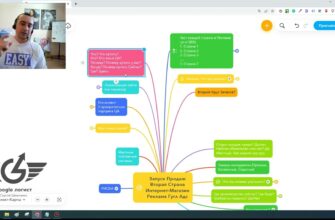SEO promotion is a series of activities that are used to raise the site in various search engines. All of them are aimed at bringing the resource to a leading position for given key queries. For such promotion, it is necessary to prescribe tags and meta tags, increase external thematic links, register in the catalog, and much more.
If we talk about contextual promotion, then it consists in buying advertising test ads on similar thematic sites.
To choose a really effective result of promoting your resource, you need to compare these methods of promotion in more detail according to the main criteria:
How many calls and sales will I get by ordering contextual advertising from you?
I need to calculate the conversion of my website Describe
the task
in the application
Calculate potential ad revenue Google
contextual advertising calculator
1. Cost.
If you look at the price, then it is worth noting that contextual advertising will cost you more compared to SEO promotion. Free directories are provided for SEO. Also, you will not have to pay for clicks of unplanned visitors, you will only spend money on internal optimization.
Contextual advertising is chosen by those who want to get a real return. In this case, you pay a fixed cost for one click, by clicking on which visitors get to your site. Accordingly, the more clients, the more you pay.
2. Predictable result.
Predicting the result for contextual promotion is not so difficult. There are many formulas for this, and in addition to these calculations, the result is usually noticeable immediately. If we talk about SEO, then the calculations will be more difficult.
3. Inertia.
If you suddenly run out of money, then contextual – immediately stops and ads automatically stop showing. With SEO, things will be a little different. Having given a positive result once, it will still attract new visitors to your site for quite a long time even if you completely stop spending money on advertising. The final results can be seen only after the next indexing.
How many calls and sales will I get by ordering contextual advertising from you?
I need to calculate the conversion of my website Describe
the task
in the application
Calculate potential ad revenue Google
contextual advertising calculator
4. Process control.
Having opted for contextual promotion, you will have the opportunity to completely change the text of your ad or stop the advertising campaign. With SEO promotion, you will not have such advanced features. Therefore, preference should be given to contextual advertising.
5. Time of final results.
By choosing contextual advertising and correctly composing the ad text, you will immediately see the effect. With SEO optimization, this process can be delayed. Be that as it may, but promotion is a rather painstaking work that is not immediately able to bear fruit.
6. User Appeal.
As a rule, the user is not able to perceive the results of the search results as advertising. Many perceive this as a natural search for the entered keyword. By itself, a contextual ad is immediately associated with an advertising campaign and attracts less attention. Some people fundamentally prefer not to look at ads. Therefore, from the point of view of psychology, SEO can bring a different category of customers compared to contextual advertising.
7. Monitoring.
Contextual promotion will require you to pay close attention and painstaking work on the text of the ad and periodically update prices. As for SEO, the effect of such an advertising campaign will undoubtedly be, however, its control and verification of effectiveness are stretched out in time for months.
8. Settings.
Contextual promotion can be quickly customized according to the geography of impressions, as well as by time, while SEO provides only general geographic conditional targeting. No matter how much you want, you will not prescribe meta tags and tags in your native Russian language for English-language sites.
However, using SEO optimization, you capture a vast number of narrowly targeted and even non-targeted requested pages, which will cost you a lot in contextual promotion.
When choosing SEO promotion, each random visitor will go to your resource absolutely free. For example, someone came in to look at the design or read the content on your site. Such visitors will not cost you a single penny. This is the main advantage of an SEO campaign.
Choose contextual advertising or SEO
We have considered the main criteria for distinguishing contextual promotion from SEO. Each of these advertising companies has its own advantages and disadvantages. However, as practice shows, the ideal option for promoting a resource is the simultaneous use of these methods with a clear understanding of the tasks and tracking the effectiveness of each of them.
















